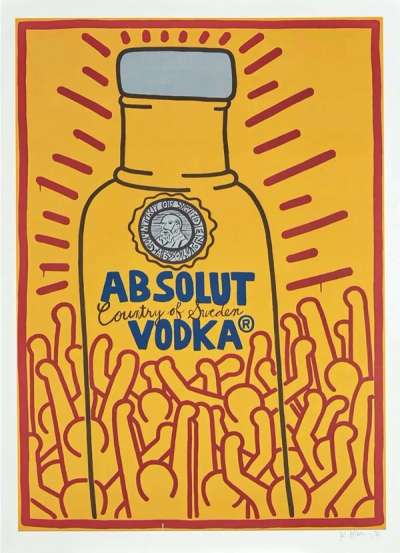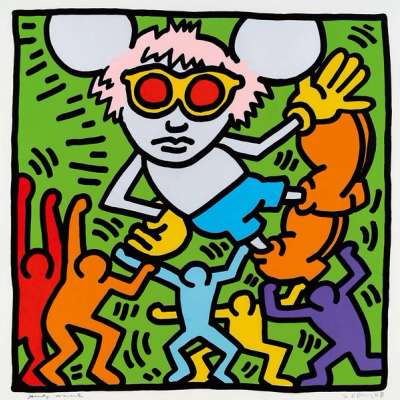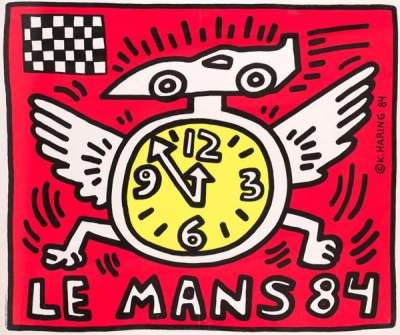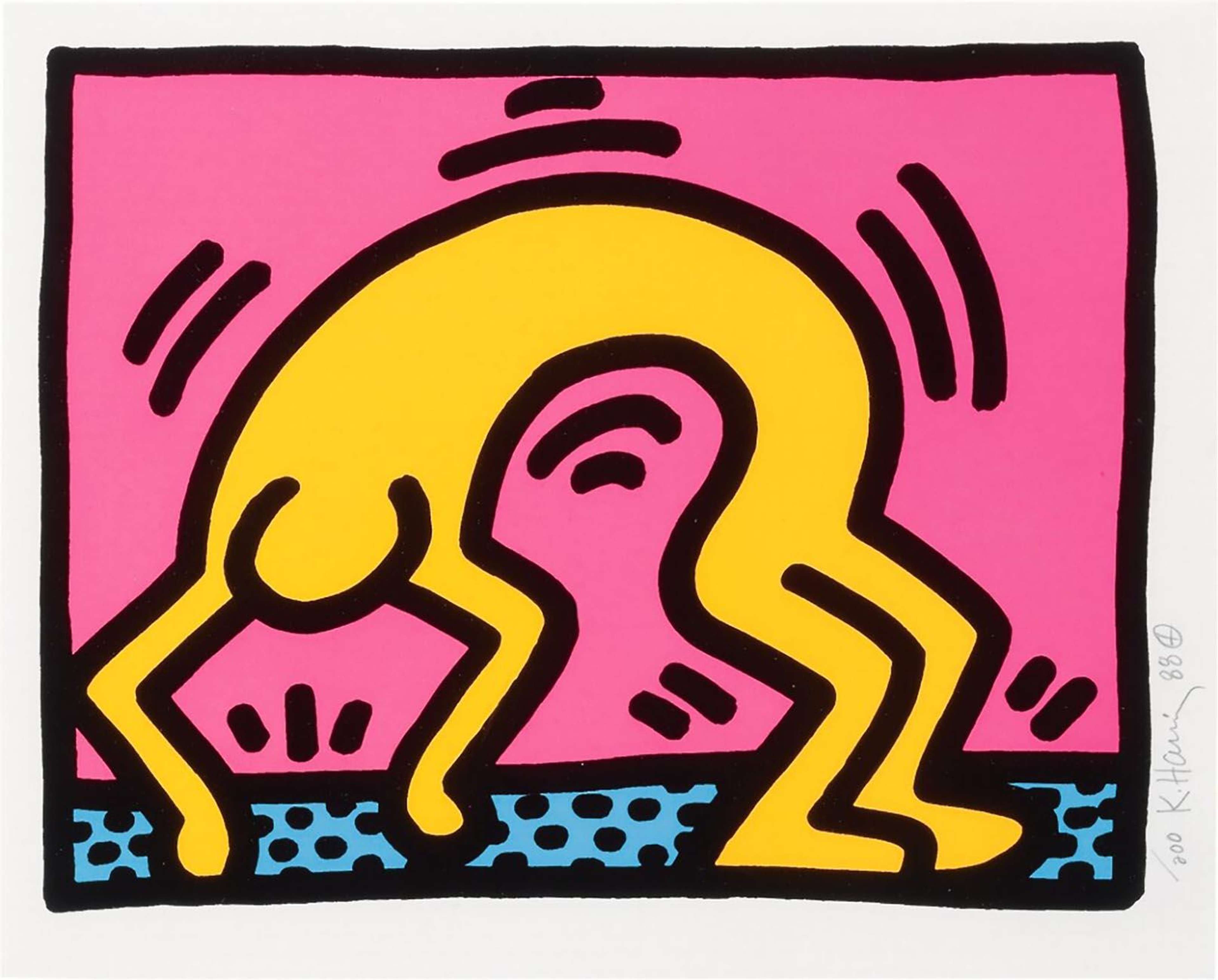 Pop Shop II, Plate III © Keith Haring, 1988
Pop Shop II, Plate III © Keith Haring, 1988
Keith Haring
249 works
Of all the major artists who have appeared since the 1980s, Keith Haring probably has the most issues with fakes and forgeries. When you think about it, how hard is it to draw a simple crawling baby or barking dog?
Naturally, there’s far more to Haring’s art than that. Keith’s genius was his ability to take cartooning and turn it into fine art. He was a master draughtsman who could create an entire composition from a single uninterrupted line. His Subway Drawings, which thrilled New York’s subway riders during the 1980s, was graffiti art of the highest order — and the bedrock on which his entire oeuvre is based (especially his prints).
Keith Haring produced a substantial body of graphics between 1982-1990. The majority of them offered the same dynamic “Pop” experience as his paintings and drawings. Along with Jean-Michel Basquiat, Haring seamlessly took art from the streets to the gallery walls. Once Haring became part of the art market food chain, the rising value of his work brought its authenticity under greater scrutiny. As with the purchase of work by any artist, you want to be certain that what you’re buying is genuine. The following is a checklist of what to look for in a Keith Haring before making your deal. Remember, conducting research ahead of time will not only enhance the enjoyment of your new print, but will reassure you that you made a wise investment.
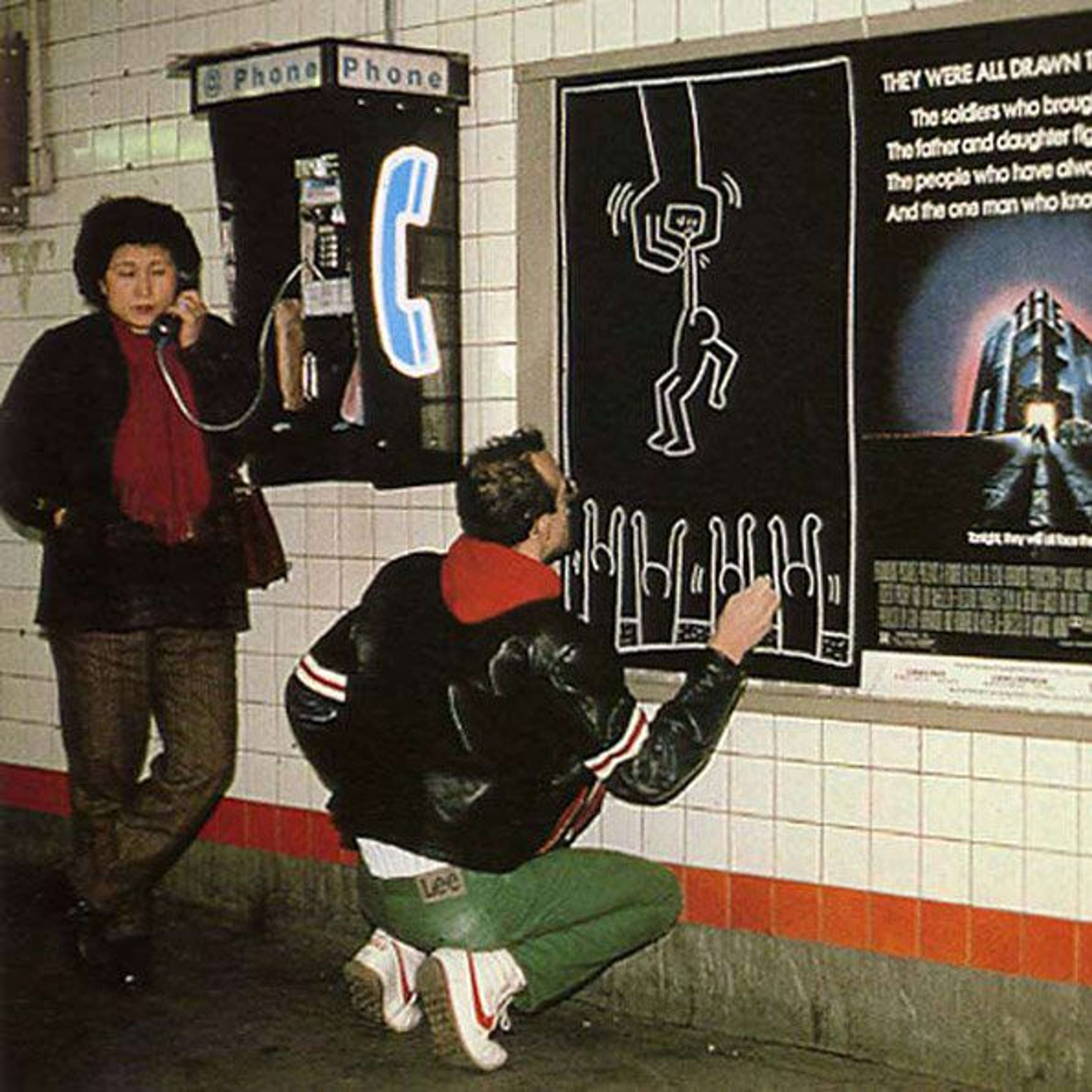 “Keith in the subway” © klimari1 (JUST SHOOT IT! Photography)
“Keith in the subway” © klimari1 (JUST SHOOT IT! Photography)A Few Basic Principles of Keith Haring Print Authentication
Make Sure What You’re Buying is an Original Print — Not a Poster
Keith Haring produced almost as many posters as he did prints. Many of them are decorative (in the best sense) and have artistic integrity. That aside, a fair number of unscrupulous dealers try to pass them off as original prints. Posters can be enjoyable to collect, especially if you’re on a budget. However, there’s something compelling about the experience of living with original art. A print, signed and numbered by Keith Haring, brings the joyous presence of the artist into the room with you. It’s a little bit spiritual, a little bit of an investment, and a whole lot of visual pleasure.
Pricing That’s Too Good to Be True
Recently, I spotted an Andy Mouse print that was available on eBay for $799.99. At first glance, the image, colours, and dimensions appeared to be accurate. Then I read the fine print. It revealed that it was from an “unlimited” edition (all four genuine Andy Mouse prints are from an edition of 30). The bottom line is there are no bargains in the art market. A good deal would be acquiring a high quality Keith Haring print that’s in mint condition at a price commensurate with what it recently sold for at auction. If you see a purported Haring print for sale, at approximately half-price, or even three-quarters of its correct retail price, I would be suspicious that it’s genuine (or isn’t damaged). In the age of the internet, anyone can research pricing information. One approach is to consult MyArtBroker’s market report data or speak to one of our specialists. You can also google the name of a specific print, type in the name of a major auction house, and often get a recent result. There’s simply no excuse for not being informed on pricing.
Buy from a Reputable Online Art Platform
When you buy from a reputable online art platform, in many ways you’re buying the “platform” as much as the art. They do everything they can to ensure that the print you’re interested in acquiring is genuine and comes with a verifiable provenance. In other words, the best online sources fully vett their prints — and stand behind them. This is particularly important for an artist like Keith Haring because of all the bogus works out there. If you’re shopping online and see a Haring that piques your interest, you should ask the source as many questions as you need to in order to feel comfortable. A serious online platform will always do everything they can to facilitate the relationship between buyer and seller.
Signature
Keith Haring’s signature is a source of continuing controversy. One of the reasons Haring’s work is relatively easy to fake is because his signature is easy to reproduce. Your best protection is to focus on the image. If the image is correct — chances are the signature will be too.
Check the Provenance Carefully
While it’s true that provenance plays a bigger part in authenticating unique works, it still comes into play when verifying a print. In reference to Keith Haring, you want to know that your print comes from a gallery closely associated with the artist’s work. Although Keith Haring had a short life, he was highly productive, exhibiting all over the globe. A label on the back from any of the following mainstream galleries, where he showed during his lifetime, is especially desirable: Tony Shafrazi Gallery, Michael Kohn Gallery, Leo Castelli Gallery, Hans Mayer Gallery, Galerie Daniel Templon, Salvatore Ala Gallery, Paul Maenz Gallery, and Robert Fraser Gallery (among others). In addition Keith’s work was exhibited at numerous “commercial” galleries, such as Martin Lawrence. While a commercial space may not represent the prestige of a serious gallery, it can just as easily indicate the work is authentic.
Check the Print’s Basics
In general, Keith Haring’s prints were signed and numbered. Make sure that your Haring bears the correct edition size, signature, and dimensions. There are plenty of examples of a popular image which has been reproduced and accompanied by the wrong edition number (or a fake reference to it being an artist’s proof). We have also seen instances where the printer added “New York” to the bottom margin — something Haring never did. We have even seen prints incorrectly signed and numbered in the side margin of a print rather than the bottom — so placement of numbering and signature matter too.
Haring Print Catalogue Raisonné
A good investment for a serious Keith Haring print collector is to purchase a copy of Keith Haring Editions on Paper 1982-1990. It’s currently out of print, but you can easily find a used copy online for under £100. Studying the catalogue won’t necessarily prevent you from buying a fake, but it does give you a basic foundation on his entire oeuvre of graphics. And like any catalogue raisonné, it will add immeasurably to your enjoyment of his art. What’s interesting here is that unlike Andy Warhol, whose prints were often editioned versions of his paintings, most of Haring’s prints are independent images. While you’re at it, you might also want to pick up a copy of Keith Haring Posters, also out of print, but readily available at £60 a copy.
Download The Collector's Guide To The Print Market In 2025.
Looking To Sell Your Haring Prints?
Browse Keith Haring on the Trading Floor and request a zero-obligation, free valuation.










